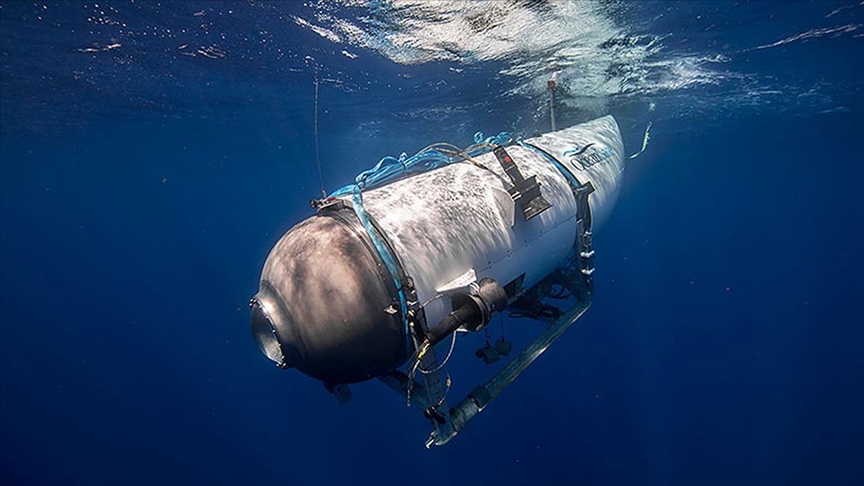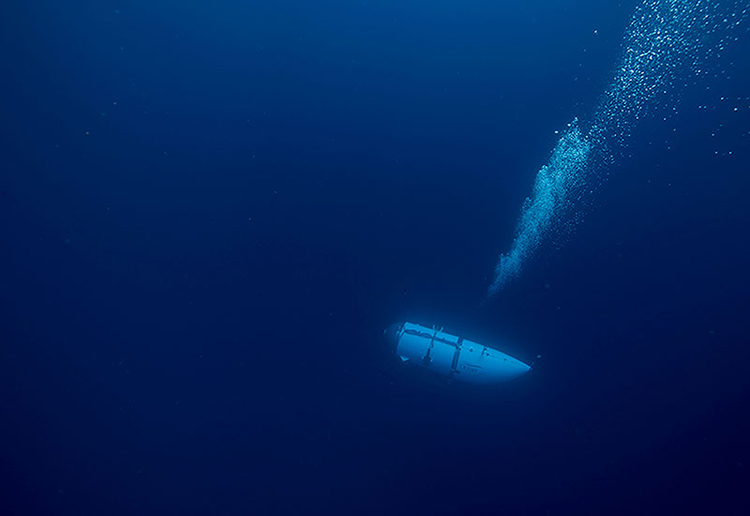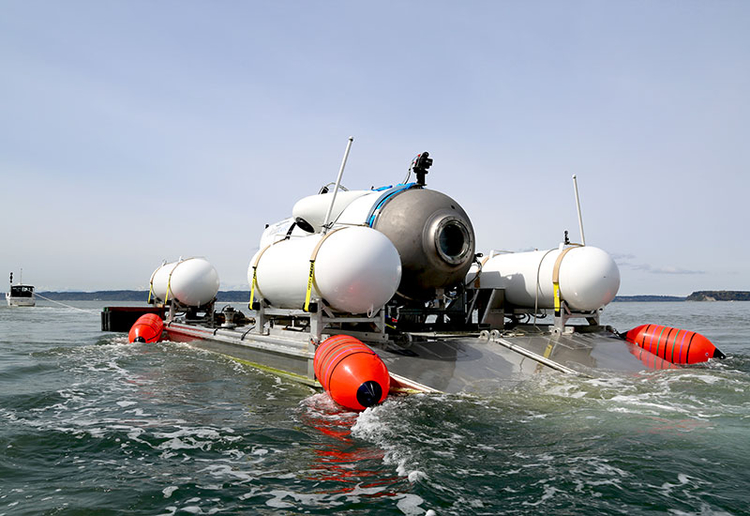The Titan submersible was an experimental underwater vehicle designed to conduct manned exploration missions to the wreck of the Titanic. Operated by the American company OceanGate Inc., it stood out for its limited passenger capacity. On June 18, 2023, the submersible went missing during a mission in the Atlantic Ocean, resulting in an international tragedy with the loss of five lives. The incident brought global attention to the limitations of submersible technologies and the regulatory and safety challenges surrounding commercial exploration.

Titan Submersible. (AA)
Technical Specifications of the Titan
The Titan was a submersible developed by OceanGate, featuring a carbon fiber and titanium alloy hull. Measuring approximately 6.7 meters in length, it was designed to dive to depths of up to 4,000 meters. Instead of using a traditional metallic framework, the vehicle employed composite materials in its external structure, a choice presented as an innovative engineering approach. Although equipped with GPS, sonar, camera systems, and communication modules, the submersible lacked certification from recognized maritime classification societies such as ABS or DNV-GL.
OceanGate and Its Commercial Approach
OceanGate offered exploration enthusiasts a dive experience to the Titanic wreck site for $250,000 per passenger. However, the company’s engineering policies and testing procedures drew criticism from many experts. CEO Stockton Rush viewed conventional safety protocols as "obstacles to innovation" and deliberately avoided independent oversight, maintaining this stance despite internal warnings.
June 18, 2023: The Missing Dive
On the morning of June 18, the Titan submersible departed from the Newfoundland region of Canada toward the site of the Titanic wreck. On board were:
- Stockton Rush (CEO of OceanGate)
- Hamish Harding (British billionaire and explorer)
- Paul-Henri Nargeolet (French diver and Titanic expert)
- Shahzada Dawood (Pakistani businessman) and his son Suleman Dawood
Approximately 1 hour and 45 minutes into the dive, communication with the submersible was lost. Following the announcement of the incident, a multinational search and rescue operation was launched, involving the U.S. Coast Guard as well as Canadian, British, and French authorities.
Search, Rescue, and Findings
During the search, “banging-like” noises were detected from the seafloor. While these sounds raised hopes of possible signs of life, subsequent analysis concluded that they were not directly linked to the incident. On June 22, 2023, debris from the Titan was found approximately 500 meters from the Titanic wreck. The U.S. Coast Guard later confirmed that the submersible had suffered a “catastrophic implosion,” resulting in the immediate death of all five occupants.

Titan Submersible. (AA)
Causes of the Accident and Allegations of Negligence
Following the incident, OceanGate faced increasing criticism regarding its safety protocols. Former employees of the company revealed that they had previously issued warnings about the structural integrity and design choices of the Titan submersible. Engineer David Lochridge had even filed a lawsuit against OceanGate, claiming that the submersible had been deployed to deep waters without adequate testing and did not meet safety standards. CEO Stockton Rush dismissed these concerns as overly cautious and “anti-innovation.”
Public and Media Reactions
The Titan tragedy garnered global media attention and sparked widespread public debate over both the catastrophic nature of the event and the boundaries of elite-driven adventure tourism. On social media, discussions focused on the ethics of million-dollar deep-sea tours, the backgrounds of the victims, and OceanGate’s public communication strategy.

Titan Submersible. (AA)
Legal Proceedings and Recent Developments
In 2024, some of the victims' families filed lawsuits against OceanGate, citing “wrongful death due to negligence.” These cases highlighted the company’s avoidance of oversight, use of non-standard manufacturing methods, and failure to act on internal warnings. The lawsuits are significant for drawing attention to the regulatory gaps in privately developed manned submersibles.
In October 2023, the remaining fragments of the Titan submersible were recovered and brought ashore for in-depth technical analysis aimed at clarifying the causes of the disaster.
Significance of the Titan Submersible Incident
The Titan tragedy was not merely a touristic disaster; it emerged as a case study at the intersection of private enterprise, engineering ethics, public safety, and technological regulation. In its aftermath, international maritime communities began to call for stricter certification processes in the manufacturing of private submersibles.


